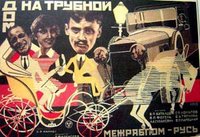
Co gallo da publicación do anterior libro do escritor americano, Paul Auster, “The Brooklyn Follies”, éste Conde xermánico afirmaba que estabamos ante unha obra de clara, evidente transición e dende logo a publicación de “Travels In The Scriptorium” ven a confirmar esa aseveración teutónica.
“Travels In The Scriptorium” é un agradecido ( por todos os admiradores da escrita do escritor americano ) punto de inflexión na recente obra de Herr Auster, pois pouco ten en común coas súas últimas novelas tanto en cuestións estilísticas coma de forma.
Nesta ocasión, o azar non é o protagonista inequívoco e recurrente en “Travels In The Scriptorium”, todo o contrário, o seu protagonista, Mr. Blank, un home desmemoriado, só nunha habitación impersoal, intenta coñecer o porqué do seu estado ( posiblemente cun terrible pasado e dubidoso futuro ) e situación, grazas a unhas fotografías e documentos que ten á súa disposición no escritorio da súa habitación ( viaxes, pescudas pra intentar ilustrar a desmemoria ), ademáis de varias visitas que vai recibindo no seu forzoso retiro, coas que intentará encaixar as pezas do seu puzzle existencial.
Herr Auster constrúe, vai debullando varias histórias paralelas, angustiosas e apaixoantes, sendo o prazer de narrar, a invención desas histórias tan características do escritor americano ( saltos temporais, relatos inconclusos e invencións narrativas quizáis non totalmente ficticias ), as verdadeiras protagonistas, acadando un resultado excelente grazas ao paradoxo mesmo de que esa información, a que lle vai sendo dosificada de diferentes xeitos a Mr. Blank e ó curioso lector, non consigue tampouco finalmente aclarar, dilucidar os enigmas e sombras do seu protagonista, permanecendo durante toda a novela unha sensación de angustia existencial, misturada con dúbidas entre o real o e ficticio, ou a inequívoca fraxilidade e dependencias humanas, realmente memorável.
“Travels In The Scriptorium” é por todo isto, unha gozosa obra de moderada ruptura coa que quizáis dé comezo unha nova xeira na sempre fascinante narrativa de Herr Auster.
E agora se mo permiten teño que deixalos momentáneamente, pois este Conde xermánico ten que ocultar certos asuntos do seu escuro pasado teutón.
Herr Graf Ferdinand Von Galitzien










